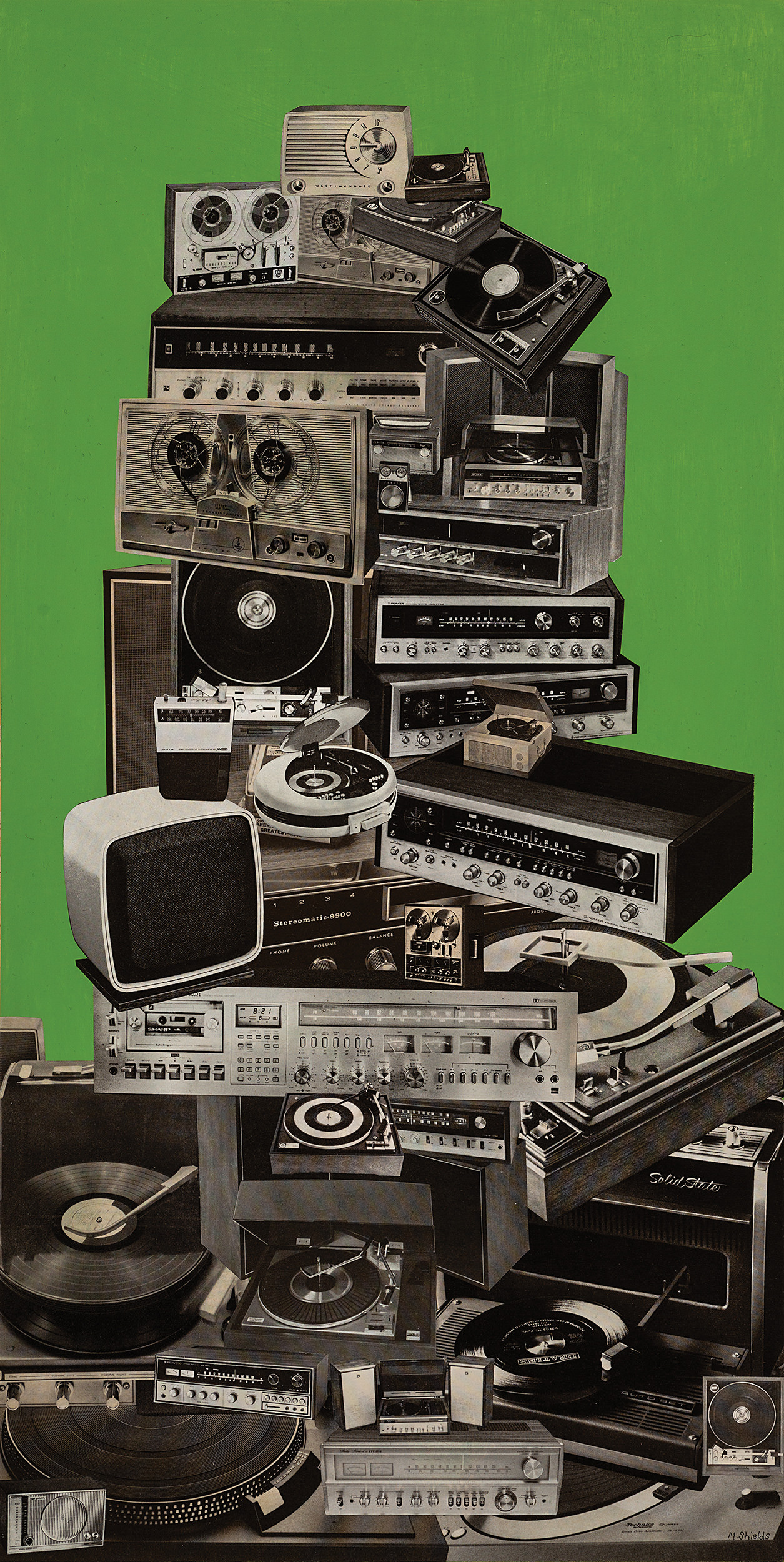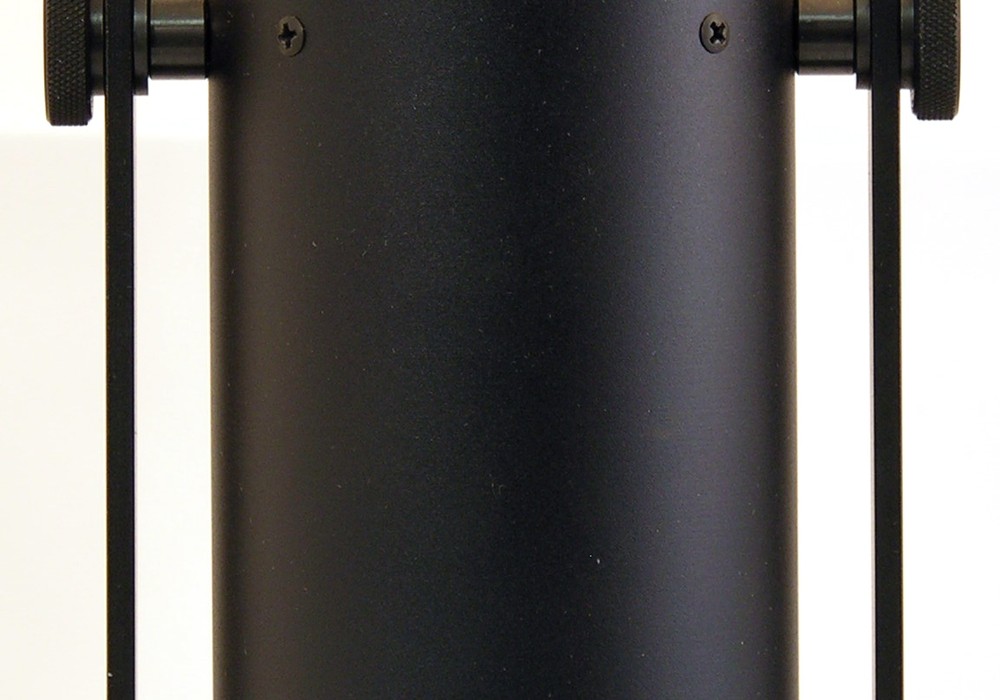In a recent review of a $7000 tube condenser microphone, I alluded to the fact that there are excellent condenser microphones being made for $400 and that it is no longer necessary to spend oodles of dough to make high-quality recordings. This is, of course, something that many Tape Op readers know, but I still received a few emails from readers wondering exactly which microphones I was talking about. The mystery is over; the main mic on my mind was the one I've been testing out for a few months now: the Roswell Mini K87 large-diaphragm condenser microphone.
Since Matt McGlynn at Roswell was nice enough to send me a matched pair to test, the first thing I did was throw them up on a drum kit as overheads through an AEA RPQ preamp [Tape Op #73]. The drummer, Eric Kalb, is a seasoned player with tons of studio experience. Both he and the bandleader, Will Bernard, were extremely impressed when I soloed the overheads and let them hear how much of the depth and detail of the kit the Mini K87s were capturing. I've recorded dozens of (really good) drummers in that same room at Figure 8 Recording, and not until that day had I had the feeling of, "Whoa, I could basically just use those two mics as the drum sound." I was instantly hooked.
Next, I used the Mini K87s as close mics on the two violins of a string quartet. This was a bit of a ballsy move since we already have so many good mics at Figure 8, and I was a touch worried that one of them would Google the Mini K87 and see how affordable it is. After all, it was the Aizuri Quartet, an extremely accomplished, Grammy-nominated group, playing on harpist/singer Maeve Gilchrist's new album. However, since we were doing more string sessions at a different studio, I needed to use mics that I'd have access to for the other dates to have any semblance of consistency. Plus, I had been so impressed with how they sounded on drums that I actually wasn't worried at all. No surprise, they were all super happy with the sound I got through the Mini K87s. Clear and bold, with tons of detail, but not overly edgy. Also, they blended exceedingly well with the other mics (JZ Black Holes on the viola and cello, and a Neumann KU 100 binaural head as a room mic).
Then it came time to record Maeve's Celtic harp at my own studio, Spillway Sound. I used the cardioid-only Mini K87s as a stereo pair high on the side of the instrument in conjunction with a Black Hole at the foot, as well as a pickup running through an amp for some added reverb and tremolo. Maeve is a phenomenally expressive player, and the Mini K87s, again through an AEA RPQ, captured the depth of her performance flawlessly, exhibiting enormous amounts of subtleties and detail.
Feeling emboldened, I chose the Mini K87 as the first-reach vocal mic for Eleanor Friedberger of the Fiery Furnaces, through the Retro Powerstrip [#82] (my favorite mic pre at Spillway Sound). Her performance was nuanced and dynamic, utilizing the entire extent of her wide vocal range, and again there were only compliments on the sound I got and then astonishment when I revealed what the mic sells for. In the mix, I only needed a touch of de-essing and top end boost since we were going for a very natural vocal sound. We used the other Mini K87 on Matt Friedberger's bass amp, this time through a Universal Audio 6176 [#35], with equally stellar results. Even without a DI, we had the full range of the bass, from meaty subs through a solid midrange, to a perfectly well-defined attack.
I then did some tests on my own to compare the Mini K87s to a few other large-diaphragm condensers in my closet, ranging in price from $1000 to, yes, $7000. There were small differences in all of the mics during these tests, which were performed on acoustic guitar and piano. Some of the mics had a little more low end push, some had slightly crispier highs, and yes, the most expensive one sounded a touch more three-dimensional. But honestly, none of these mics sounded cheap, not even the cheapest among them! The Mini K87s could easily have gotten picked in a blind comparison for any of these tasks; it would really come down to taste and/or context for picking a winner in each case. I would, in fact, venture to say that the Mini K87s registered as the most neutral sounding mics in these tests, whereas the other mics all highlighted a certain frequency range to some degree.
After chatting with Matt at Roswell for a while, this made sense to me. His design philosophy for the Mini K87 certainly revolves around making a high-functioning, neutral-sounding mic. He cuts costs by using some stock, readily available parts, but the components in charge of the sound of the mic are chosen very carefully. After that, it's all about the voicing and quality control of the Neumann K67-style capsules that set the Roswell mics apart from other mics in their price range. (This is why a matched pair actually costs $100 more than two single mics; the tolerances between the two mics are matched extremely closely, to within 0.5 dB in sensitivity, and 1.5 dB over the whole range of 50 Hz through 15 kHz, which apparently takes a fair amount of time.) Matt honed his microphone savvy over years of running RecordingHacks.com, meticulously cataloging and analyzing a huge number of mics, and it shows.
It also needs to be stated that both the carrying case and the shock mount that come with the mic are top notch. The shock mount feels sturdy, like it's going to last a long time, plus it has a cool cutaway in front so you can position the mic much closer to your sound source than normal spider-mounts allow for. Also, the Mini K87s are obviously smaller and lighter than their Neumann eponyms, which made them super easy to position wherever I need them.
I love this mic. I love its price. And I love its accessories. I've been telling everyone who will listen to buy a pair of them. My prediction is that Roswell will sell a ton of them because when you make something this good, people notice.





_disp_horizontal_bw.jpg)